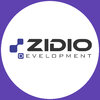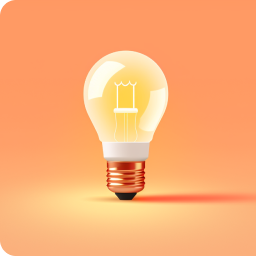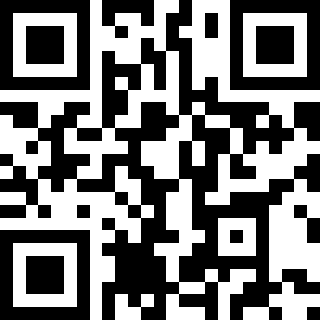UI and UX Designer Intern
50+ UI and UX Designer Intern Interview Questions and Answers

Asked in Ideamagix

Q. State the Heuristic principles. 'who' is Heuristic?
Heuristic principles are a set of general rules or guidelines for designing user-friendly interfaces. 'Heuristic' refers to a method of problem-solving that uses shortcuts and rules of thumb.
Heuristic principles help designers create intuitive and user-friendly interfaces
They are based on common patterns and behaviors of users
Examples include visibility of system status, match between system and the real world, and user control and freedom

Asked in Zidio Development

Q. What tools and software are you most comfortable using for UI/UX design in your experience?
I am proficient in various UI/UX design tools that enhance my workflow and creativity.
Figma: Excellent for collaborative design and prototyping.
Adobe XD: Great for creating interactive prototypes and wireframes.
Sketch: Ideal for vector-based design and UI components.
InVision: Useful for prototyping and gathering feedback.
Miro: Effective for brainstorming and user journey mapping.
UI and UX Designer Intern Interview Questions and Answers for Freshers

Asked in MNC Group

Q. How do you stay updated with the latest UI design trends and technologies?
I stay updated with the latest UI design trends and technologies by following design blogs, attending webinars, and participating in online design communities.
Follow design blogs such as Smashing Magazine, Awwwards, and UX Design.cc
Attend webinars and workshops on platforms like Adobe Live and Dribbble
Participate in online design communities like Designer Hangout and Behance
Experiment with new tools and technologies like Figma, Sketch, and Adobe XD

Asked in Zidio Development

Q. What is UI/UX, and why did you choose to pursue a career in this field?
UI/UX focuses on user interface design and user experience, enhancing usability and satisfaction in digital products.
UI (User Interface) refers to the visual elements of a product, like buttons and layouts, e.g., the design of a mobile app.
UX (User Experience) encompasses the overall experience a user has with a product, including usability and accessibility, e.g., website navigation.
I chose this field because I am passionate about creating intuitive designs that solve real p...read more

Asked in MNC Group

Q. What are some common UI design mistakes and how can they be avoided?
Common UI design mistakes include poor navigation, cluttered layouts, inconsistent branding, and lack of user feedback.
Poor navigation: Ensure clear and intuitive navigation paths for users to easily find information.
Cluttered layouts: Keep designs clean and organized, avoiding overcrowding of elements.
Inconsistent branding: Maintain a cohesive visual identity throughout the UI for brand recognition.
Lack of user feedback: Incorporate interactive elements like hover effects or...read more

Asked in MNC Group

Q. How do you handle feedback and revisions during the design process?
I welcome feedback and revisions as they help improve the design process.
I actively seek feedback from stakeholders to ensure the design meets their needs.
I take feedback constructively and use it to iterate on the design.
I communicate openly with team members to discuss revisions and incorporate changes.
I prioritize user feedback to create a user-centric design.
I document all feedback and revisions to track the design evolution.
UI and UX Designer Intern Jobs


Asked in Zidio Development

Q. Can you describe the difference between user interface (UI) design and user experience (UX) design?
UI design focuses on the visual elements of a product, while UX design emphasizes the overall experience and usability.
UI design involves creating buttons, icons, and layouts, e.g., designing a mobile app's interface.
UX design encompasses user research, wireframing, and testing, e.g., conducting user interviews to improve app navigation.
UI is about aesthetics and interactivity, while UX is about functionality and user satisfaction.
UI designers work on the look and feel, while...read more

Asked in Zidio Development

Q. What is the difference between UI and UX, and why is UI/UX currently trending?
UI focuses on the visual design, while UX emphasizes user experience and interaction. Both are trending due to digital transformation.
UI (User Interface) is about the look and feel of a product, including colors, typography, and layout.
UX (User Experience) is about the overall experience a user has with a product, including usability and satisfaction.
Example of UI: A visually appealing website with intuitive navigation.
Example of UX: A seamless checkout process that minimizes...read more
Share interview questions and help millions of jobseekers 🌟


Asked in CollegePur

Q. How do you approach user research before starting a design project?
I conduct thorough user research to understand needs, behaviors, and pain points before initiating any design project.
Define research goals: Identify what you want to learn, such as user needs or pain points.
Choose research methods: Use surveys, interviews, or usability testing to gather insights.
Recruit participants: Find users that represent your target audience for more relevant feedback.
Analyze data: Look for patterns and insights in the data collected to inform design de...read more

Asked in Zaalima Development

Q. How do you ensure your designs are user-friendly and accessible?
I prioritize user research, accessibility standards, and iterative testing to create user-friendly designs.
Conduct user research to understand needs and pain points, e.g., surveys and interviews.
Follow accessibility guidelines like WCAG to ensure designs are usable for people with disabilities.
Utilize design systems and components that promote consistency and familiarity, e.g., Material Design.
Perform usability testing with real users to gather feedback and iterate on designs...read more

Asked in Zidio Development

Q. Is it beneficial to create a feature-rich UI with satisfying UX?
A feature-rich UI can detract from UX if it overwhelms users; balance is key for satisfaction.
Feature-rich UIs can lead to cognitive overload, making it hard for users to focus on essential tasks.
For example, a dashboard with too many widgets can confuse users rather than help them.
A satisfying UX prioritizes user needs and simplicity over an abundance of features.
Consider Google’s homepage: minimal features lead to a clear focus on search, enhancing user satisfaction.
In cont...read more

Asked in CollegePur

Q. What UI/UX tools are you comfortable with, and can you share any past work or portolio?
I'm proficient in various UI/UX tools and have a portfolio showcasing my design projects.
Figma: Used for collaborative design and prototyping; created a mobile app interface for a local restaurant.
Adobe XD: Designed wireframes and interactive prototypes for an e-commerce website.
Sketch: Developed UI components for a SaaS product, focusing on user flows and usability.
InVision: Created high-fidelity prototypes for user testing, which helped refine the final design.
UserTesting: ...read more

Asked in Ideamagix

Q. Why did you choose to be a UI/UX Designer?
I chose to be a UI/UX Designer because I am passionate about creating user-friendly and visually appealing digital experiences.
Passion for creating user-friendly designs
Interest in improving user experiences
Enjoyment in combining creativity and problem-solving
Desire to make technology more accessible and intuitive
Inspiration from successful UI/UX designs like Apple products

Asked in Zidio Development

Q. What tools do you commonly use for UI/UX design, and why?
I use various tools for UI/UX design to enhance creativity, collaboration, and efficiency in the design process.
Figma: A collaborative design tool that allows real-time editing and feedback from team members.
Adobe XD: Great for creating interactive prototypes and wireframes with a user-friendly interface.
Sketch: Popular for UI design, especially for web and mobile applications, with a strong plugin ecosystem.
InVision: Useful for prototyping and getting user feedback through i...read more

Asked in Zidio Development

Q. Can you describe a challenging design problem you encountered and the solution you implemented?
I faced a challenge in redesigning a healthcare app's user flow to improve patient engagement and accessibility.
Identified user pain points through surveys and interviews, revealing confusion in navigation.
Conducted usability testing with prototypes, iterating designs based on feedback.
Implemented a card sorting method to organize information logically, enhancing user understanding.
Collaborated with developers to ensure design feasibility and smooth implementation.
Launched th...read more

Asked in MNC Group

Q. What are some best practices for designing mobile interfaces?
Best practices for designing mobile interfaces include prioritizing content, using intuitive navigation, optimizing for touch, and ensuring consistency.
Prioritize content to ensure key information is easily accessible
Use intuitive navigation such as clear menus and buttons
Optimize for touch by designing for fingers rather than mouse clicks
Ensure consistency in design elements like colors, fonts, and spacing

Asked in Zidio Development

Q. How do you approach user research for new projects?
I conduct user research through interviews, surveys, and usability testing to understand user needs and behaviors.
Identify target users: Define who the users are based on demographics and psychographics.
Conduct interviews: Engage with users to gather qualitative insights about their needs and pain points. For example, interviewing patients about their experience with a healthcare app.
Utilize surveys: Distribute questionnaires to collect quantitative data on user preferences a...read more

Asked in Zidio Development

Q. What is the key principle of user experience (UX) design?
The key principle of UX design is to create user-centered experiences that are intuitive, efficient, and enjoyable.
User-Centered Design: Focus on the needs and preferences of users. For example, conducting user interviews to gather insights.
Usability: Ensure that the product is easy to use. An example is simplifying navigation in a mobile app.
Accessibility: Design for all users, including those with disabilities. For instance, using alt text for images.
Consistency: Maintain u...read more

Asked in Zidio Development

Q. What is the process for creating wireframes and prototypes?
Creating wireframes and prototypes involves research, sketching, designing, and testing to visualize and refine user interfaces.
1. Research: Understand user needs and project goals through user interviews and competitor analysis.
2. Sketching: Create rough sketches on paper or digital tools to brainstorm layout ideas quickly.
3. Wireframing: Develop low-fidelity wireframes using tools like Balsamiq or Figma to outline structure and functionality.
4. Prototyping: Build interactiv...read more

Asked in Zaalima Development

Q. How do you handle feedback during the design phase?
I embrace feedback as a vital part of the design process, using it to refine and enhance my work for better user experiences.
I actively seek feedback from team members and stakeholders throughout the design phase to ensure alignment with project goals.
For example, during a recent project, I conducted usability testing sessions and gathered insights that led to significant design improvements.
I maintain an open mindset, viewing feedback as an opportunity for growth rather than...read more

Asked in Zidio Development

Q. Can you describe your design process from start to finish?
My design process involves research, ideation, prototyping, testing, and iteration to create user-centered solutions.
1. Research: Conduct user interviews and surveys to understand needs. For example, interviewing patients to improve a health app.
2. Ideation: Brainstorm ideas and create user personas. For instance, developing personas for different user demographics in a fitness app.
3. Prototyping: Create wireframes and interactive prototypes using tools like Figma or Sketch. ...read more

Asked in Zummit Infolabs

Q. What’s the difference between UI/UX Designing and Graphics Designing?
UI/UX Design focuses on user experience and functionality, while Graphic Design focuses on visual aesthetics.
UI/UX Design involves creating user-friendly interfaces and enhancing user experience.
Graphic Design focuses on creating visually appealing designs and layouts.
UI/UX Designers prioritize usability and functionality, while Graphic Designers prioritize aesthetics.
UI/UX Designers work on wireframes, prototypes, and user flows, while Graphic Designers work on logos, brandi...read more
Asked in Ungrammary

Q. How do you use a Design System in your project?
I leverage design systems to ensure consistency, efficiency, and scalability in my UI/UX projects.
Utilize a shared library of components to maintain visual consistency across the application.
Implement design tokens for colors, typography, and spacing to ensure uniformity.
Conduct regular audits of the design system to incorporate user feedback and improve usability.
Example: Using Material-UI in a React project to quickly prototype and maintain a cohesive design.
Collaborate wit...read more
Asked in Sunidhi Securities & Finance

Q. Where do you see yourself in 5 years?
In five years, I envision myself as a skilled UI/UX designer, leading projects and mentoring junior designers while driving innovative solutions.
Leading a team of designers on impactful projects, like redesigning a major app for improved user engagement.
Mentoring interns and junior designers, sharing knowledge on best practices and design thinking.
Staying updated with industry trends, possibly contributing to design conferences or workshops.
Exploring opportunities in product ...read more

Asked in CollegePur

Q. Why do you want to join an unpaid internship?
I seek an unpaid internship to gain hands-on experience, enhance my skills, and contribute to meaningful projects in UI/UX design.
I want to learn from experienced professionals in a real-world setting, which is invaluable for my growth.
This internship will allow me to build a strong portfolio with practical projects, showcasing my design capabilities.
I am eager to collaborate with a team, gaining insights into the design process and user-centered design principles.
I believe t...read more

Asked in Zidio Development

Q. What is the difference between UI and UX design?
UI focuses on the visual aspects of a product, while UX emphasizes the overall experience and usability for the user.
UI (User Interface) design deals with the layout, colors, typography, and interactive elements of a product.
UX (User Experience) design encompasses the overall journey a user takes when interacting with a product, including usability and satisfaction.
An example of UI design is creating buttons and sliders in a mobile app, while UX design involves researching us...read more

Asked in Zidio Development

Q. What tools do you use for designing interfaces?
I use a variety of tools for designing interfaces, focusing on collaboration, prototyping, and user testing.
Figma: For collaborative design and prototyping, allowing real-time feedback.
Adobe XD: Useful for creating interactive prototypes and wireframes.
Sketch: A popular tool for UI design, especially for macOS users.
InVision: Great for prototyping and getting user feedback on designs.
Zeplin: Helps in handoff between designers and developers by providing specs.

Asked in MNC Group

Q. What are the key principles of UI design?
Key principles of UI design include consistency, simplicity, clarity, hierarchy, and feedback.
Consistency: Maintain uniformity in design elements throughout the interface.
Simplicity: Keep the design clean and easy to understand for users.
Clarity: Ensure that information is presented clearly and legibly.
Hierarchy: Organize content in a way that guides users through the interface.
Feedback: Provide visual or interactive cues to let users know their actions have been registered.
Asked in Enatel Telecommunication

Q. Please describe the process you followed to create a sign-up screen.
I followed a user-centered design process to create a sign-up screen.
Researched user needs and preferences
Created wireframes to visualize layout and flow
Designed mockups with clear call-to-action buttons
Tested usability with target users for feedback
Iterated based on feedback to improve user experience
Asked in Signitives IT Solutions

Q. What design tools are you most comfortable with?
I am most comfortable with Adobe XD and Figma for UI/UX design.
Proficient in Adobe XD for creating wireframes and prototypes
Experienced in Figma for collaborative design work
Comfortable using Sketch for interface design
Knowledge of prototyping tools like InVision
Interview Experiences of Popular Companies








Reviews
Interviews
Salaries
Users

















